Peter Ireland – 5 November, 2014
It's a surprising and refreshing installation, revealing the breadth and depth of contemporary photography in New Zealand, albeit as a rather core sample. As so often happens with such skilled placement, an even familiar image gets a transfusion from the company it finds itself suddenly keeping. There's delight and humour in some of the juxtapositions too, giving access to that engagement the medium is so good at.
Auckland
Photographs from the Gallery Collection and the Chartwell Collection (Ground Level corridor)
The Social Life of Things
Curated by Julia Waite and Zara Stanhope
18 September 2014 - 7 June 2015
What do institutions do with their collections? Mostly, they’re in storage, a dark and quiet place from which individual items emerge from time to time to be included in exhibitions. What these exhibitions are about and why certain choices are made as to their components are always fertile ground for meditation. Over more than a century the Auckland Art Gallery has assembled possibly the most distinguished visual art collection in the country. In the 1970s they began collecting photography, contemporary and historical, a process continuing in its zig-zag fashion to the present day: adding recent work, filling gaps from the past and recognising aspects of the medium hitherto under-valued. It’s a creative enterprise as there’s no pre-existing list of boxes to be ticked.
Exhibition-wise, over almost half a century, the menu on Kitchener Street’s been a mix of the national and the international. One of the medium’s virtues is its relatively easy to show globally significant work in exhibitions - in the 1970s, for instance, there were shows from MoMA of contemporary US photography when you could see the parallel painting of the time only in books. The photograph collection was pretty much kicked off by Elam lecturers John B Turner and Tom Hutchins, and they acted as honorary curators for a time, the authors of the seminal 1973 exhibition Three New Zealand Photographers: Gary Baigent, John Fields and Richard Collins. Another threesome appeared there in 1979: Fiona Clark, Laurence Aberhart and Peter Peryer.
As other public galleries started following this lead in the 1980s, the Auckland institution’s activity seemed to slacken off, and 1984’s The Chelsea Show (1) was practically the last in-house group exhibition featuring contemporary New Zealand photographers. Thirty years is a long time between drinks. Thirsty years, more like it. Of course, there have been several hosted shows touring from other insitutions and significant in-house surveys of individuals such as Marti Friedlander, but nothing either taking a core sample of contemporary practice, looking at the medium as such, or themed exhibitions from the Gallery’s own collection.
In the 1950s the Auckland Art Gallery came to the forefront as the country’s de facto national art gallery partly from its mission to educate the public vis a vis New Zealand’s own emerging art history as well as the often contentious subject of modern art, and its efforts on these scores was absolutely pioneering and probably reasonably effective. In the 1960s and ‘70s no other local institution came within a bull’s roar of its programme and national outreach.
This mission seemed to go off the boil in the 1980s for a number of reasons. Firstly, the Gallery’s programme focused much more on contemporary “cutting edge” art, and anything historical tended to take a back seat. Secondly, since contemporary photography was then still very much in documentary mode, it was held to be a bit embarrassingly old-fashioned, so tended to drop off the radar (2), and in that decade the initiative had moved south, to the National Art Gallery and the City Gallery in the Capital. Thirdly, once the services of Turner and Hutchins had been dispensed with there was no one on the Gallery staff (except perhaps Andrew Bogle) with the specialist interest - or even the initiative - to give photography much of a profile. The medium was definitely the poor relative waiting outside at the door, cap in hand.
At the very time during the ‘90s and the 2000s when photography began impacting seriously on the art world, some sort of commitment to public education might have informed an admittedly somewhat uninformed Auckland audience about the medium, there was almost nothing. And what there was tended to reinforce primitive assumptions that the medium was essentially about the subject matter. It’s like saying Michelangelo’s drawings are about pencils.
In conjunction with the Chartwell Collection - which the AAG has care of these days - the Gallery’s own collection makes for an extensive and impressive body of photographic imagery. And yet, apart from odd appearances in multi-media shows there, the images seem largely confined to the cool and dark environment of the storerooms (3). At least until now. Hopefully the advent of The Social Life of Things signals a new direction for the relatively new administration at the Gallery, a direction having enough momentum to sustain the revelation of large parts of the collection in as stimulating and rewarding configurations. A proposal apparently in the pipeline might feature a number of images by the late-Pictorialist photographer Lennard Casbolt. Who could’ve thought a couple of decades ago that his work could be resurrected and so profiled in our lifetimes? One can only say “bring it on.”
The long entry-level corridor at the Gallery may seem an unpromising exhibition space, especially right now when the former access to it from the Kitchener Street side has been sealed off for the big Light Show from London’s Hayward Gallery. But Assistant Curator, Julia Waite and Prinicipal Curator, Zara Stanhope’s selection of works and their placing on the long wall makes the most of the limited space and indeed capitalises on it, as viewers are encouraged to get up close and personal, as well as walk back and forth to construct their joining of the conceptual dots.
The 42 photographs have been drawn from both the Chartwell and the Gallery’s own collections, and held together by an open-ended theme, broadly speaking employing images of single, rather ordinary objects to allow meditation on their singularity and how, after intense scrutiny, they cease to seem ordinary at all. Stanhope and Waite have picked up a couple of tricks from Peter Peryer: he’s often said his images are “about one thing”, and the relative scale the curators play with in the show is a deeply Peryer-esque methodology.
It’s a surprising and refreshing installation, revealing the breadth and depth of contemporary photography in New Zealand, albeit as a rather core sample. As so often happens with such skilled placement, an even familiar image gets a transfusion from the company it finds itself suddenly keeping. There’s delight and humour in some of the juxtapositions too, giving access to that engagement the medium is so good at. The Social Life of Things is a superbly scaled and paced exhibition (4): showing the range of the collection, offering new readings of the varied subject matter, providing an outing for a wide cross-section of contemporary photographers and, best of all, intelligently laying out what the medium uniquely can do.
In Douglas Adams’ The Hitchhiker’s Guide to the Galaxy it turns out that after an extremely lengthy computer search for The Answer to the Ultimate Question of Life, the Universe and Everything the answer was an enigmatic “42”. Incidentally, the title of the book might serve as an excellent one for a history of photography, but the fact the answer equates precisely with the number of images in this show suggests the content may indeed relate to the Ultimate Question of Life, the Universe and Everything.
Peter Ireland
(1) 1984’s The Chelsea Show was curated as part of the centenary celebrations for the Chelsea Sugar Refining Company. A number of higher-profile contemporary NZ photographers were commissioned to give their take on the works’ site at Birkenhead. The resulting exhibition and catalogue featured selections from these bodies of work.
(2) Nevertheless, there were a few exceptions, such as the Hallmark photography show, seen in Auckland over the summer of 1995/96, a large historical collection from the eponymous US greetings card company.
(3) As earlier remarked on this site - in Mirror Images, 8 November 3013 - when the reconstructed AAG building re-opened in 2012 one of the major shows was a purported history of NZ art from the foundation of the colony to the present. The earliest photograph included was dated 1955. A whole century missing.
(4) A handful of the smaller images higher up on the wall are not the easiest to see clearly, but in the context of such a show this is a quibbling observation rather than a criticism. But, all design considerations aside, seeing things clearly is quite important.
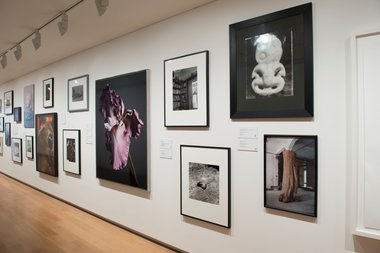

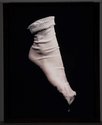
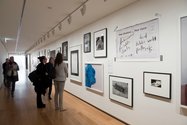
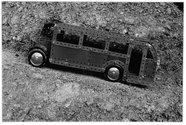
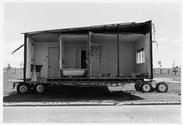


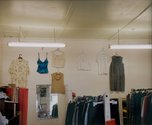
 Advertising in this column
Advertising in this column Two Rooms presents a program of residencies and projects
Two Rooms presents a program of residencies and projects



This Discussion has 0 comments.
Comment
Participate
Register to Participate.
Sign in
Sign in to an existing account.